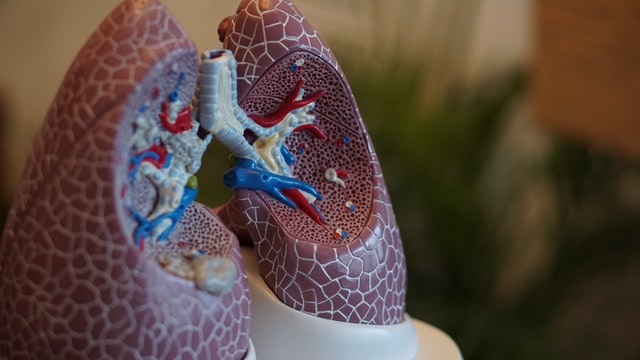TEAS science digestion is considered a challenging part of the TEAS exam. In this article, we will provide you with an overall view of the TEAS digestive system, as well as 4 facts about this test segment to successfully ace this. Visit our TEAS Practice Test Free and start your studying right now!
What To Know About The Digestive System For The TEAS?
When the other digestive organs are absent, the TEAS digestive system is little more than a long, hollow tube leading from the tongue to the abdomen. Each segment of the vertical and horizontal gastrointestinal tract performs a specific function and job in the body, much as the upper and lower respiratory tracts in the respiratory system. Following these processes, food, and liquids are processed by the gastrointestinal system:
The mouth, throat, esophagus, stomach, small intestine, large intestine, and rectum make up the human digestive system in order of importance.
The tongue, salivary glands, liver, gallbladder, and pancreas are all part of the digestive, or gastrointestinal, system and contribute to digestion. The common bile duct connects the gallbladder and pancreas, which release and deposit bile and digestive enzymes, respectively, into the duodenum of the small intestine.
Read more>> TEAS Science Study Guide
The Salivary Glands, the Mouth, and the Tongue
Through the mouth, a person may take in food and liquids. Muscular structures in the mouth, such as saliva and salivary glands, help move food into the mouth, as well as aid in swallowing. In addition to providing lubrication for the tongue and other oral surfaces, salivary glands play a role in digestion by producing and secreting a liquid termed saliva, which is produced and secreted by the glands illustrated below.
- Salivary glands are called parotid when they are located on the mouth or tongue side.
- The salivary gland is located under the mandible, in the submandibular region.
- The salivary gland is located on the tongue’s underside.
Additionally, salivary glands contribute to digestion. Amylase is found in saliva produced by these salivary glands. Amylase is an enzyme that aids in digestion. Amylase is a digestive enzyme that releases glucose and maltose from starches. To put it another way, the digestive process begins in the mouth when it comes to the digestion of starches. Sugars like glucose and maltose are formed when starches are broken down.
The Pharynx
The pharynx is both a component of the digestive and breathing systems of the body. Air and food enter the pharynx by the nasopharynx or the mouth, respectively. When individuals complain that their “meal has gone down a dangerous pipe,” they mean that their pharynx and trachea are not being adequately closed by the epiglottis, which ordinarily prevents food and fluids from entering the trachea.
The Epiglottis
The flap-like protrusion at the rear of the mouth that connects to the larynx is known as the epiglottis. During breathing, it rises upward to enable air to enter the trachea, and during swallowing and drinking fluids, it slides down to allow food to enter the esophagus, both of which are components of the digestive system. The gag and cough reflexes are triggered by this area of the respiratory and digestive system as well as the stomach.
The Liver
As can be seen in the illustration below, the liver is a digestive organ and gland located on the right side of the abdominal cavity, close to the center of the body. Bile is produced in the liver and then delivered to the gallbladder and the small intestine through the common bile duct. Fats are broken down and digested by bile.
The Esophagus
This illustration shows how the esophagus is a long, straight hollow tube that begins in the throat and terminates in the stomach. There are two types of muscle in this muscular tube. The upper section of the esophagus contains skeletal muscle, whereas the lower half of the esophagus has smooth muscle.
There is a sphincter at the head of the esophagus and a sphincter at the bottom at the place where it is linked to the stomach in the pharynx. To prohibit nutrition and hydration from backing up into the pharynx and the esophagus, these muscular sphincters have been developed to keep the esophagus and stomach apart. In this way, they resemble the heart’s valves, which keep blood from flowing backward between the chambers. Gastroesophageal reflux disease (GERD) is a condition in which the contents of one’s stomach and esophagus back up into the pharynx.
Peristalsis, the activity of propelling and moving food and fluids down the digestive system, is the major function of the esophagus. Constipation is caused by the muscular activity known as peristalsis, which moves and propels food and liquids through the gastrointestinal system. There are no digestive enzymes in the esophagus that aid in the digestion process.

The Stomach
Food and fluids are pushed and moved down the gastrointestinal system after being propelled and carried along the esophagus by peristalsis into the stomach, which is a hollow organ in the center-left of the abdomen.
Sections or portions of the stomach may be found throughout the body. The fundus, body, and atrium are all visible in the image above. The esophagus and small intestine are linked by this muscular organ, which includes sphincters like the esophagus to prevent stomach contents from re-entering the esophagus and small intestinal contents from returning to the stomach.
Digestive enzymes including pepsin, hydrochloric acid, and gastric acid are secreted by the stomach to aid digestion. Chyme is a mixture of partly digested food and fluids that are still in the stomach. Specifically, pepsin breaks down proteins, and hydrochloric acid supplies the required acidity for the digestive enzymes in order to be used.
Some compounds, such as water-soluble vitamins B and C and some drugs like aspirin, are only marginally absorbed by the stomach to a far smaller amount than the small intestine, which is mentioned below.
The Small Intestine
The assimilation portion of digestion is mostly carried out by the small intestine, the digestive tract’s major organ. Minerals and nutrients important for optimal nutrition and survival may be found in the small intestine after the condensed water from the stomach has been metabolized. Additionally, the small intestine is supplied with bile, which assists digestion, as well as pancreatic enzymes through the common bile duct. For absorption, these enzymes in the pancreas degrade fats, carbohydrates (starches), and proteins (lipids). At its top end, it joins the stomach, while its lower end joins the large intestine, as seen in this illustration of the small intestine. As before, a sphincter stops backflow.
The 3 segments of the small intestine, from the uppermost portion to the lowermost region, are:
- The duodenum
- The jejunum
- The ileum
The top end of the duodenum links to the stomach, whereas the lower end connects to the jejunum. Due to its importance in the digestion process, the duodenum is not as crucial in absorption as other parts of the small intestine, such as the jejunum, and ileum. Although iron is deposited in the duodenum, this is the exception rather than the norm.
When the chyme is expelled in its acidic state from the stomach, bicarbonate, an alkaline chemical produced by the duodenum, neutralizes this acidity. The liver produces bile, but the gallbladder concentrates and sends it to the duodenum of the small intestine, where it may be used for digesting.
In the small intestine, the jejunum, or middle segment, is connected to the duodenum and to the ileum through the jejunum’s lower end. When it comes to digestion, the jejunum is the body’s primary anatomical structure for absorbing all of the digested food components and delivering them to the bloodstream. As a consequence of starch and glycogen digestion, fatty acids, as well as amino acids, are all absorbed into the bloodstream and made available to the body’s cells and tissues in this area.
The small intestine’s duodenum and ileum are connected by the ileum, which is the final piece or part of the ileum to be reached. A “clean up man” duty is played by the small bowel’s ileus after the jejunum, despite its importance in absorption. There are certain nutrients that the jejunum leaves behind, as well as vitamin B12 and bile acids that the ileum receives.
The Large Intestine
When it comes to water absorption, the large intestine seems to be impacted by almost every aspect of the digestive system that is engaged in the process. To put it simply, the large intestine is responsible for absorbing the water that is essential for living, as well as eliminating waste in the form of stool.
In an abdominal tube, as seen above, the large intestine joins at its top to the intestinal mucosa of the small intestine, which connects to the rectum at its bottom. the big intestine is divided into two primary sections from its top to its lowermost part: the large intestine
- The cecum
- The Colonial
The colon would be further separated into the following 4 segments:
- The colon – ascending
- The colon-transverse
- The colon-descending
- The colon-sigmoid
There is no known function for the appendix in digestion or absorption, although it connects to the cecum, which is the first part of the large intestine. The ancestral cecum and ileum are connected by the ascending colon, which receives water from the small intestine and expels waste by peristalsis; this waste may then be removed from a person’s body.
The ascending colon is connected to the transverse colon at its beginning, while the descending colon is connected to the transverse colon at its conclusion. As the descending colon, the rectum, and the external environment continue to receive water and waste material, the transverse colon continues to absorb water. Among its most important functions is to contain waste of feces until they can be expelled and discharged from the organism. The descending colon is connected to the transverse and sigmoid colons, both of which it originates.
To begin and finish, each of the sigmoid and the rectum are connected to the descending colon and to each other. Feces are retained until such time as the pressure inside of the colon is high enough to trigger and facilitate their evacuation via the rectum by the sigmoid colon. There are 2 options when the recto rectum joins with the descending colon: at its start and at its termination. Normal defecation is controlled by the rectum’s rectal sphincter muscle, which acts as a sphincter to keep waste out of the body.
Read more>> Free TEAS Science Practice Test
The Digestive System’s Importance
The digestive system (which is also called the gastrointestinal system) includes the digestive or gastrointestinal tract as well as a few other organs that contribute to digestion. The liver, pancreas, and gallbladder are all examples of these organs. It is the digestive system’s major function is to ingest and digest food and fluids so that nutrients may be absorbed from the digestive system and into the bloodstream for the body’s fuel, energy, and hydration requirements. The processes of digestion are as follows:
- Mastication
- Digestion
- Absorption
The three different types of nutrients that are taken into the bloodstream as a consequence of digestion are:
- Protein digestion results in amino acids and peptides.
- Starch and carbohydrate breakdown produces sugars such as glucose.
- As a result of fat metabolism, triglycerides, and fatty acid metabolism are produced.
- The stomach and small intestine are responsible for digesting protein, whereas salivary amylase initiates starch and carbohydrate digestion, which continues in the stomach, and the stomach and small intestine are responsible for fat digestion.

Everything You Need To Know About TEAS Science Digestion: 4 Facts
It’s going to be on the TEAS, so pay attention. TEAS Science digestion questions require that you know these four facts. You may also use these study methods for any additional TEAS Science digestion topics that may arise.
- The mouth is the principal location where carbohydrates are digested.
- The stomach is the principal location where protein is digested.
- The duodenum (1st part of the small intestine) is the principal location where fat (lipid) is digested.
- The jejunum (2nd part of the small intestine) is the principal location where the nutrient is absorbed.
The chances of seeing one of them in your TEAS Science section are quite high. For now, focus on memorization while also using them as a springboard for your study sessions to come.
There are many stages of digestion
Guttering is a sort of mechanical digestion that acts on carbohydrate, protein, and lipid digestion in the mouth, for example (fats and oils). Salivary lipase, an enzyme that aids in the digestion of lipids, is produced in the mouth as a result of teeth chewing. Salivary lipase, on the other hand, does not really break down lipids. It aids in the breakdown of lipids via the process of hydrolysis.
The body has processes in place to combine lipids with water before they can be digested. So that later enzymes can digest the fat, salivary lipase starts the mixing process. In contrast, for the TEAS, the duodenum is the primary site of lipid digestion. Lipase from the pancreas begins to break down lipids in the pancreas, allowing the body to metabolize the lipids and use them as energy. As you can see, TEAS Science digestion questions are already becoming more difficult to answer.
Studying for the TEAS digestion section is made easier with the use of study scaffolds
To build upon, keep these four things in mind. You’re most likely to see these four facts. For example, you may have learned in college that both protein and carbohydrate digestion takes place in the duodenum. Brush border enzymes break down carbohydrates in the duodenum. It is not true that carbohydrates are mostly digested in the small intestine if you answer this question in a TEAS Science digestion question. This is why knowing the primary locations is so critical.
Additionally, you’ll need to know how food travels via the digestive tract. The enzymes and hormones involved in chemical digestion, as well as any possible mechanical digestion, must be known at the non-primary sites.
Let’s make sure you understand what the TEAS signifies when it comes to digestion
Molecules are reduced in size when they are broken down during digestion. For the TEAS, there are two main kinds of digestion.
- Chewing and stomach-churning constitute mechanical digestion.
The digestive process is started with mechanical digestion. When food is chewed and mixed during mechanical digestion, the surface area of the meal increases. Remember from chemistry class how enzymes operate better when they have greater surface area? As a result, we’ve arrived at the second digesting method.
- Chemical Digestion has the same meaning as digestion with types of enzymes
When huge macromolecules are broken down into smaller molecules by chemical digestion, miracles begin to happen. The body may absorb these huge macromolecules after they’ve been digested and broken down into smaller bits. The mouth is the beginning point for digestion, while the duodenum is the last stop. Chewing and churning are two methods of mechanical digestion (stomach). The mouth, stomach, and small intestine are all involved in chemical/enzymatic digestion.
FAQs
Final Words
In conclusion, understanding the science of digestion is essential for success on the TEAS exam. By familiarizing yourself with the intricacies of teas science digestion, you will be well-prepared to tackle the related questions on the test. Remember to focus on key concepts such as the digestive system’s organs and their functions, the processes of digestion and absorption, and the roles of enzymes and hormones in breaking down food.
Above is all the information associated with TEAS science digestion. We hope that this article with beneficial knowledge areas will help you ace this challenging part of the TEAS test. Good luck to you!



